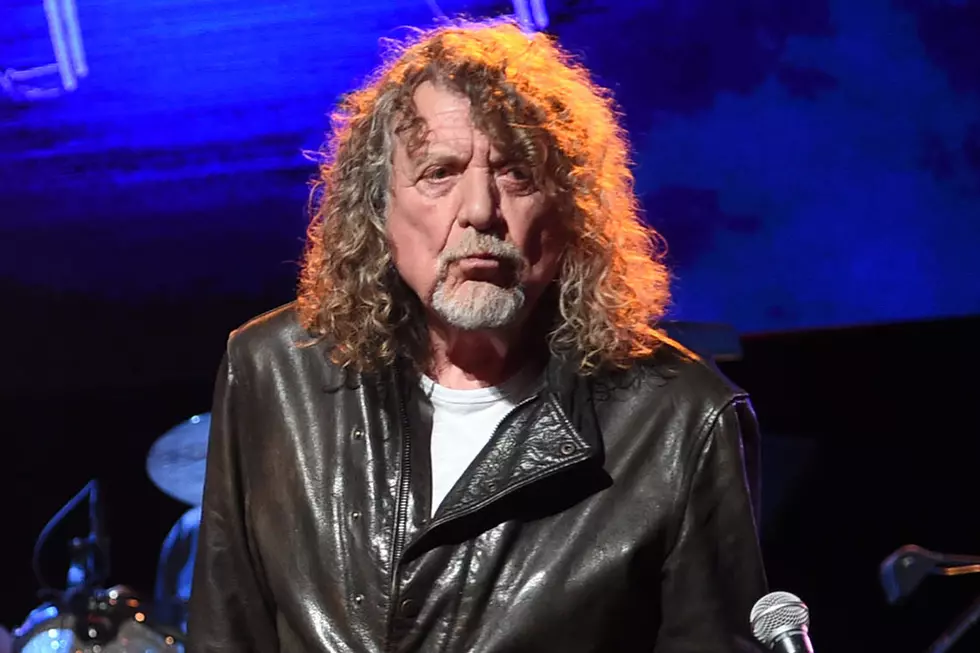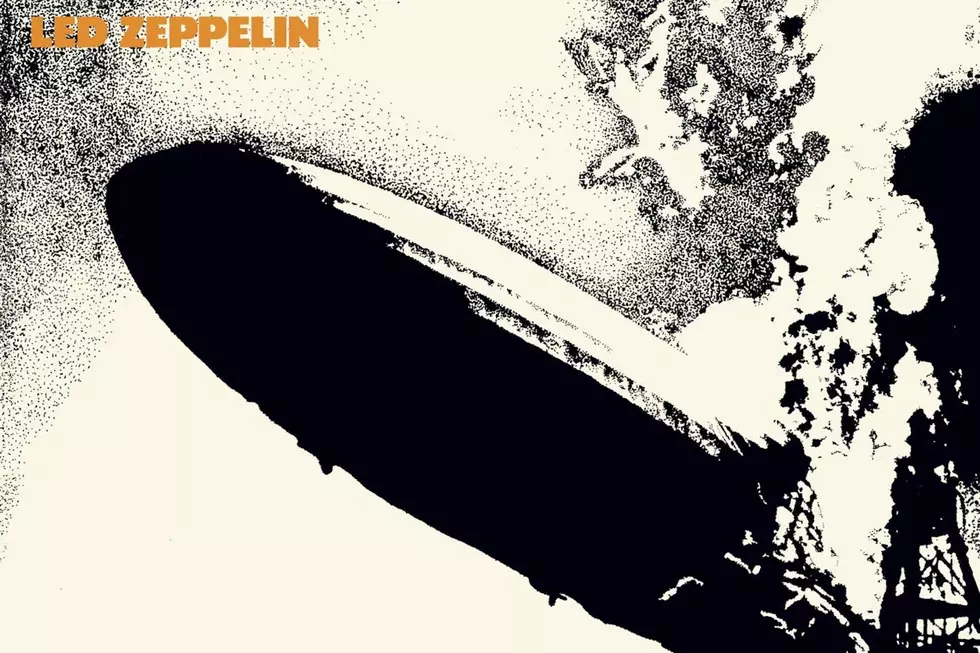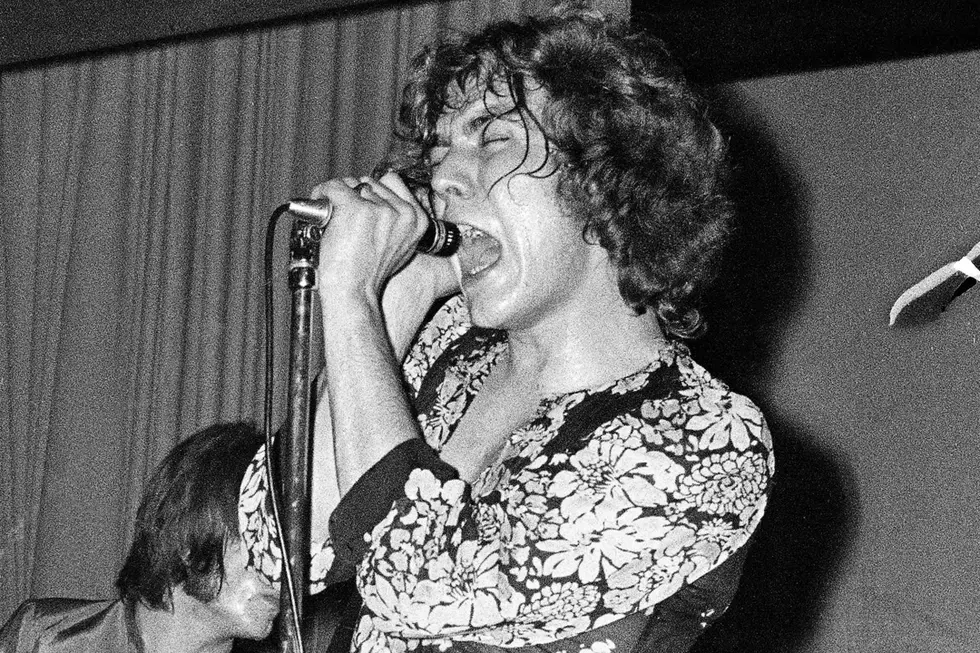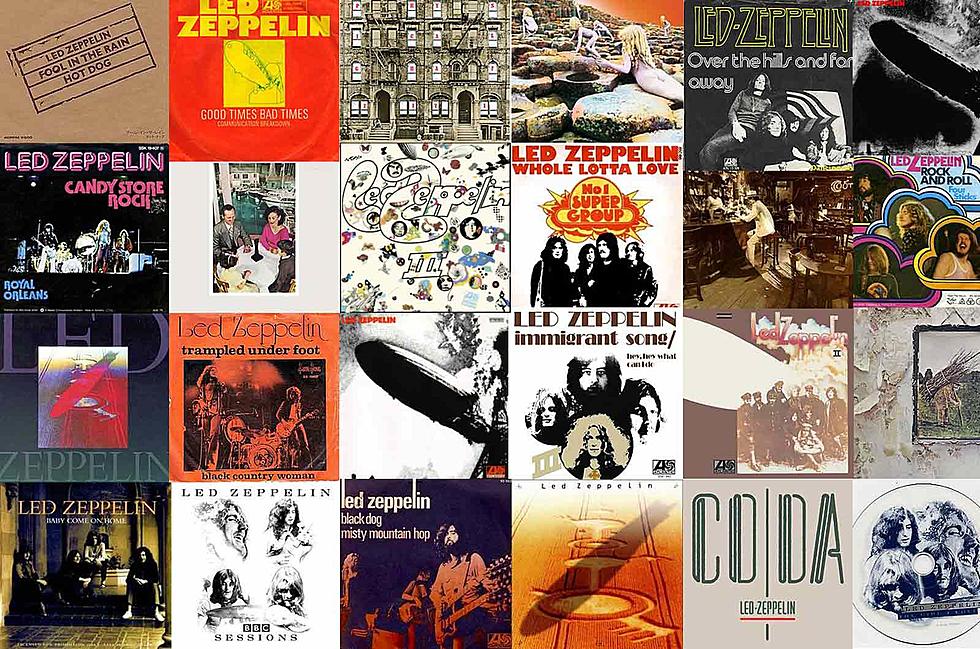
45 Years Ago: Led Zeppelin Begins Residency at Earls Court
By 1975, Led Zeppelin were the undisputed heavyweight champions of the rock 'n' roll universe. That year, all six of the band’s records had re-entered the charts in the wake of the release of Physical Graffiti, and their tour of North America had been one of the most lucrative of all time to that point. They capped off what had already been a banner year with a career-defining five-night residency at London’s Earls Court Exhibition Centre, begun on May 17, 1975.
Originally, Led Zeppelin and manager Peter Grant conceived of the event as a three-night celebration to take place from May 23-25 as a sort of sendoff, before exorbitant U.K. tax laws sent them into hiding. Due to “demand unprecedented in the history of rock music,” as claimed by promoter Mel Bush however, an additional two nights on May 17-18 were tacked on to the itinerary.
Earls Court was selected by Grant and Bush as the site to stage the event because, as the press release stated, it enabled "the largest number of people to see Zeppelin an enclosed venue" and "it is the most central of all London venues, particularly for those traveling from the provinces."
All 85,000 tickets to the five individual shows were snatched up in a heartbeat, as British fans clamored to catch their first glimpse of Led Zeppelin in over two and a half years.
Zeppelin rose to the occasion, shipping their 40-ton U.S. touring stage across the Atlantic at an exorbitant cost. The rig featured a brand new, state-of-the-art sound system manufactured by Showco as well as a spectacular laser and light show. And as an added bonus, they also purchased and set up a large projection screen in the venue to give even those in the rafters a good view of the action.
The first night of the residency kicked off with an introduction from disc jockey Bob Davis – each of the five nights began with a similar introduction from a local radio personality – before Led Zeppelin came on with a blistering version of “Rock and Roll.” The set list for all of the performances remained pretty much the same, as Led Zeppelin performed a diverse collection of the heavy electric hits, with a mini-acoustic set thrown in the middle featuring “Tangerine,” “Going to California,” “That’s the Way” and “Bron-Yr-Aur Stomp,” before getting plugging in again and closing the night out with “Stairway to Heaven.” The encore remained “Whole Lotta Love” and “Black Dog” for all but the final night, when Led Zeppelin elected to add “Heartbreaker” and “Communication Breakdown” in the mix.
Coming as they did just two months after the conclusion of their high-flying tour of North America, Led Zeppelin was in fine form. The playing was the epitome of “tight but loose,” as Jimmy Page was fond of saying. Robert Plant was at his charismatic best; he even took shots at the government for the state of the tax laws forcing the band into exile. John Bonham brought the thunder, as per usual, with his nightly showcase piece “Moby Dick” stretching out to the 20-30 minute mark – and John Paul Jones remained the sonic bedrock, as he always had.
The last evening, May 25, stands as perhaps the band’s finest live performance, and clocked in at just under the four-hour mark. After it was all over, Jones, Plant and Page relocated for a time to Switzerland, before going their own separate ways. Months later, Plant would be involved in a car accident in the Greek Isles that would throw the future of the band into tremendous doubt. A full four years passed until they played another gig in the U.K.
As a result of utilizing the projection screen, the Earls Court concerts were recorded for posterity. Still, so far, only a portion has been seen by the general public, as part of a Led Zeppelin DVD released in 2003. Still, their legend has persisted – something Bonham understood from the first. “I thought," he once told reporter Chris Welch, "they were the best shows that we ever put on England.”
Led Zeppelin Albums Ranked
More From Ultimate Classic Rock









